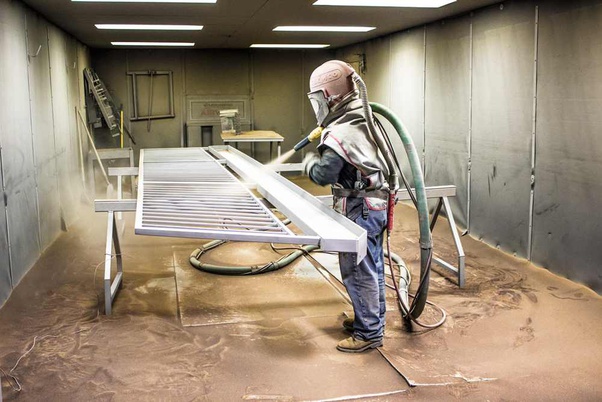Nolifrit Detail Explanation on Enamel Sandblasting
We know that enamel products must be surface pretreated before being coated with enamel frit. The main role of pretreatment is to remove the oil scale, rust, and oxide on the surface of the metal body, and make it no longer rust in a short time. For degreasing of steel body, we generally use chemical degreasing and oil burning methods. But how should we deal with the rust generated after the steel body is oil burnt? Nolifrit will explain to you in detail the physical rust removal method of enamel steel body - sanding.

Sanding, also called sandblasting, it use fine silicon carbide under the impetus of compressed air to blast sand on the surface of the iron body after oil burning, using hard sand particles to rub against the surface of the slab to remove the surface iron oxide and impurities.. This method is suitable for the surface treatment of cast iron slabs and thick steel plate, that is, large enamel sanitary ware products, enamel reactors, enamel pipes, etc. Generally, it’s rarely used in daily enamel cookware factories.
Sanding or sandblasting is a mechanical cleaning method that uses pure physical impact to remove impurities from the surface of the billet. After sandblasting, the surface can be artificially roughened to promote the adherence formation of enamel products. Therefore, it can be said that sandblasting is an extremely important process for enamel pretreatment. Materials used for sandblasting include emery (composed of silicon carbide), steel shot 45, hardened white iron, cemented carbide, corundum, tungsten carbide, boron carbide, etc. At present, the most commonly used are emery and quenched white iron. The diameter of the shot blasting is generally about 8 to 14 mesh. The shape of the shot blasting is generally sharp, but the sharp shot is easy to wear the leather tube. The pressure of the compressed air used is 4 ~ 6 * 105 Pa. The sand flow is directed at the surface of the product at an angle of 45 °.
The compressed air must be filtered. Water and oil vapor are not contained, otherwise it will pollute the surface of the billet. Sandblasting operation consumes about 50 to 70 kg of sand per square meter of surface, and the air consumption is 16 to 20 cubic meters.
Cast iron or thick steel plates must be inspected after sandblasting. Defects should be repaired. Grind the gates, burrs, sticky sand, flashes, etc. by medium-soft sand grinding wheel, and smooth the weld repair and edge areas. In this way, the processed billet can minimize the occurrence of enamel defects.
Maybe some friends still have questions, why do enamel cookware products rarely use sandblasting to remove rust? This is because the steel plates used in daily enamel cookware products are generally very thin, usually within 0.4 ~ 1mm. These thin steel plates have limited strength and are easily deformed under the impact of high pressure air carrying sand particles. Therefore, sandblasting is rarely used to remove rust. Traditionally, pickling is generally used.